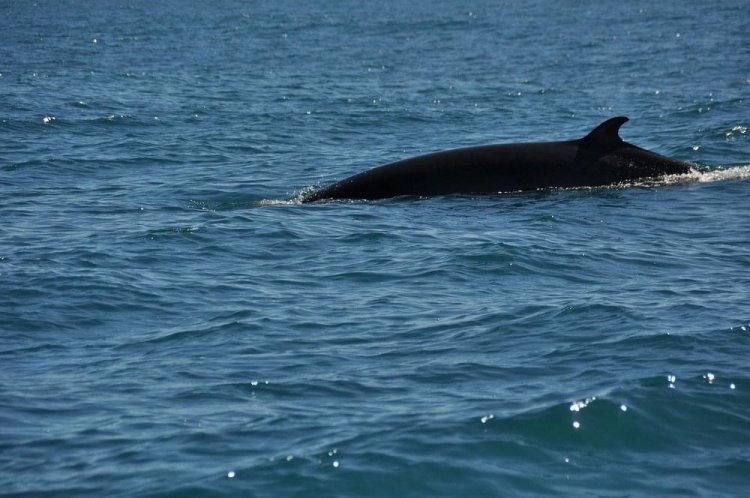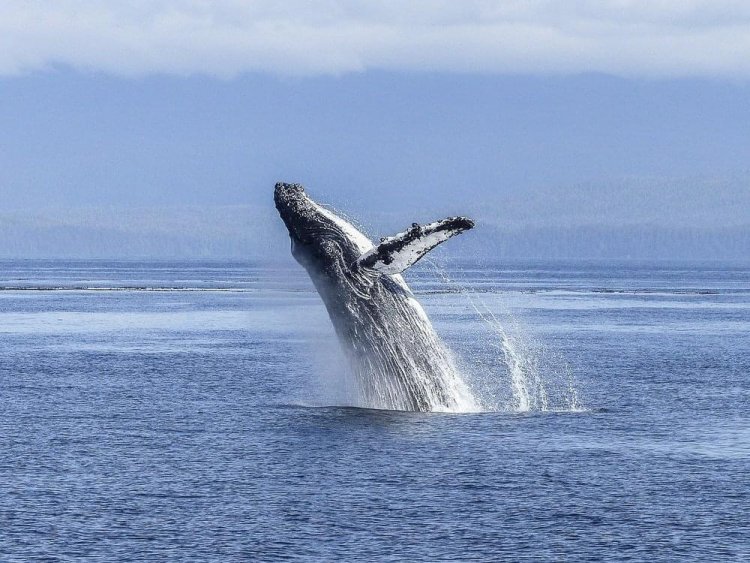Take a ferry ride and hear the engine cut out just before the crackle on the captain’s loudspeaker announcing a pod of resident orcas — so many people will rush to the side of the boat to witness the scene that you’d half-expect the boat to lean to one side! Pacific Northwesterners know the awe of watching an orca whale breach in front of their boat.
Even though resident orca populations have been in recent decline, one lucky tour group out of Edmonds was privileged to witness the newest member of J-Pod at play with mom. The moment was particularly heartwarming, given that the mom was Tahlequah, the Orca who stole the national stage in 2018, when she refused to let her dead newborn calf go, and carried it through the water in apparent mourning for 17 straight days.
Whether you see our resident orcas, or a minke, the thrill is the same — Puget Sound is known as the American Serengeti for its abundant supply of wild life. With five species of whales who travel through Puget Sound, you’re going to enjoy the ride with Puget Sound Express, which provides the Seattle area’s only half-day cruise out of the Edmonds Marina.
Want to know what whales you’re likely to see and when? We’ve got the line-up for you here:
Bigg’s Orcas
Typical Season: October through February, often spotted in the summer
Bigg’s (transient) orcas are the largest member of the dolphin family. These apex predators feed on large mammals, from harbor seals to dolphins and even small whales. Bigg’s Orcas, named for cetologist Michael Bigg, are the top predator in the sea, and they travel from Southern California up to the Arctic Circle in a less-predictable migratory pattern. Their migration through Puget Sound brings them around from October through February, as they follow the winter salmon run. They're often spotted during the summer, too, wherever the food is plentiful.
The Humpback Whale
Best Season: May through early fall
Humpbacks are a species of baleen whale and weigh in at a whopping 40 tons and reach up to 50 feet in length. They are the largest species of whale in the Salish Sea.
With long pectoral fins and a knobbly head, they are easily distinguishable with their distinctive surface behaviors and frequent breaching. Their diet consists mostly of krill and small fish and are typically here spring through fall to feed on spawning herring. These gentle giants were nearly hunted to extinction until commercial whaling was banned in 1996. Thankfully, they are making a great comeback.
The Gray Whale
Seasons: January through July
In October, the gray whales begin their migration from Alaska to the sub-tropical waters of Baja, CA, where they give birth. The 10,000-mile round trip keeps the whales within a couple miles of the shore, making them easy to spot from land. Slate-gray in color and streaked with gray-and-white scars, the gray whale is a species of baleen whale. Gray whales have two blowholes on top of their head, forming a distinctive heart-shaped blow at the surface. They can grow from 43 to 49 feet and weigh as much as 40 tons. Puget Sound Express explains that gray whales were once thought to be strictly seasonal travelers along the outer coast. "We now know that these waters are more than just a stop on a migratory route for some. A small group of gray whales nicknamed ‘Sounders’ often turn east into Washington’s inland waters, usually during the spring northern migration.”
Minke Whales
Season: Year round, but more sightings in the summer
The elusive minke whales are among the smallest of the baleen whales and feed on small school fish, crustaceans, and plankton. Clear markings include a dark-gray back and white undersides, and pectoral fins with a distinctive white patch or band. Minkes range in length from 23-33 feet and weigh up to 10 tons. Minke whales are found throughout the north Pacific and Atlantic oceans. They’re seen year round in Puget Sound waters, but migrate seasonally from their polar feeding grounds to equatorial waters.
Southern Resident Orcas
Season: Year round
The only orca population listed as endangered, the Southern Resident orcas are a large extended family. We identify them as Pods J, K, and L. Within each pod, families form into groups around older females — the grandmothers or great-grandmothers of the group. Their extraordinary familial bonds keep both male and female offspring in close association with their mothers for their entire lifetime. Due to a decline in salmon in the Salish Sea, these orcas are not as commonly seen as the Southern Resident orcas are. But Puget Sound Express tours have witnessed them many times, including the heartwarming scene of Tahlequah showing off her calf, and the exhilarating experience of watching T46 pod make prey of a harbor porpoise, desperate to make his escape.
Banner Photo Courtesy of Puget Sound Express and by Bart Rulon


